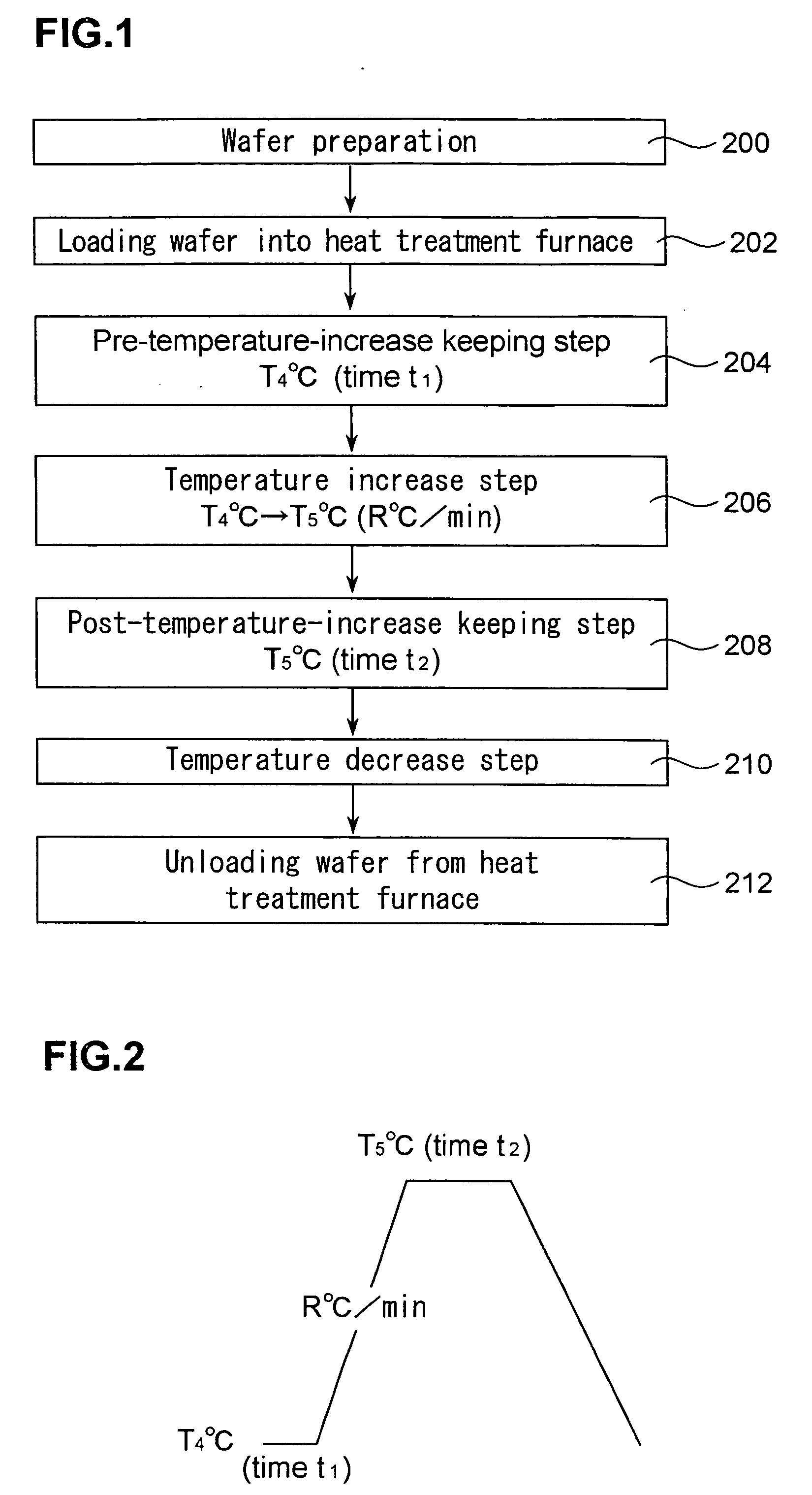Annealed wafer and anneald wafer manufacturing method
- Summary
- Abstract
- Description
- Claims
- Application Information
AI Technical Summary
Benefits of technology
Problems solved by technology
Method used
Image
Examples
example 1
[0119] A silicon single crystal was pulled by the Czochralski method in a region of (Nv-Dn)+Ni in FIG. 10 (JP A 2002-201093) under controlling a growth rate between a first growth rate at a boundary where a defective region (Dn) left after annihilation of an OSF ring and detectable by a Cu deposition method is annihilated when the growth rate of pulling a silicon single crystal was gradually reduced, and a second rate at a boundary (a boundary between an N region and an I region) where an interstitial dislocation loop is generated when the growth rate is further gradually reduced, so that there was prepared a mirror-polished silicon wafer manufactured from a silicon single crystal pulled in a condition that the generation of voids was suppressed.
[0120] In the growth of the crystal, nitrogen was not added. The wafer has a diameter of 8 inches, a crystal orientation of , and a resistivity of about 10 Ω·cm (boron doped). Wafers of two types having different oxygen concentrations were ...
example 2
[0125] The silicon mirror-polished wafers manufactured in the same conditions as those in Example 1 were subjected to the following heat treatment in an argon atmosphere. That is, the wafers were kept at 700° C. for 1 hour, the temperature was increased to 900° C. at a rate of 3° C. / min, and increased from 900° C. to 1200° C. at a rate of 5° C. / min, and the wafers were kept at 1200° C. for 1 hour. After the keeping, the inside temperature of the heat treatment furnace was decreased to 700° C. at a rate of 3° C. / min, and the wafers were unloaded from the heat treatment furnace.
[0126] On the wafers (annealed wafers) subjected to the heat treatment, TZDB good chip yields and densities of the oxide precipitates were measured under the same conditions as those in Example 1. As a result, in all cases of the oxygen concentrations, as in Example 1, the good chip yields in the regions having a depth of at least up to 5 μm were almost 100%, and those in the regions having a depth of up to on...
PUM
 Login to View More
Login to View More Abstract
Description
Claims
Application Information
 Login to View More
Login to View More - R&D
- Intellectual Property
- Life Sciences
- Materials
- Tech Scout
- Unparalleled Data Quality
- Higher Quality Content
- 60% Fewer Hallucinations
Browse by: Latest US Patents, China's latest patents, Technical Efficacy Thesaurus, Application Domain, Technology Topic, Popular Technical Reports.
© 2025 PatSnap. All rights reserved.Legal|Privacy policy|Modern Slavery Act Transparency Statement|Sitemap|About US| Contact US: help@patsnap.com



